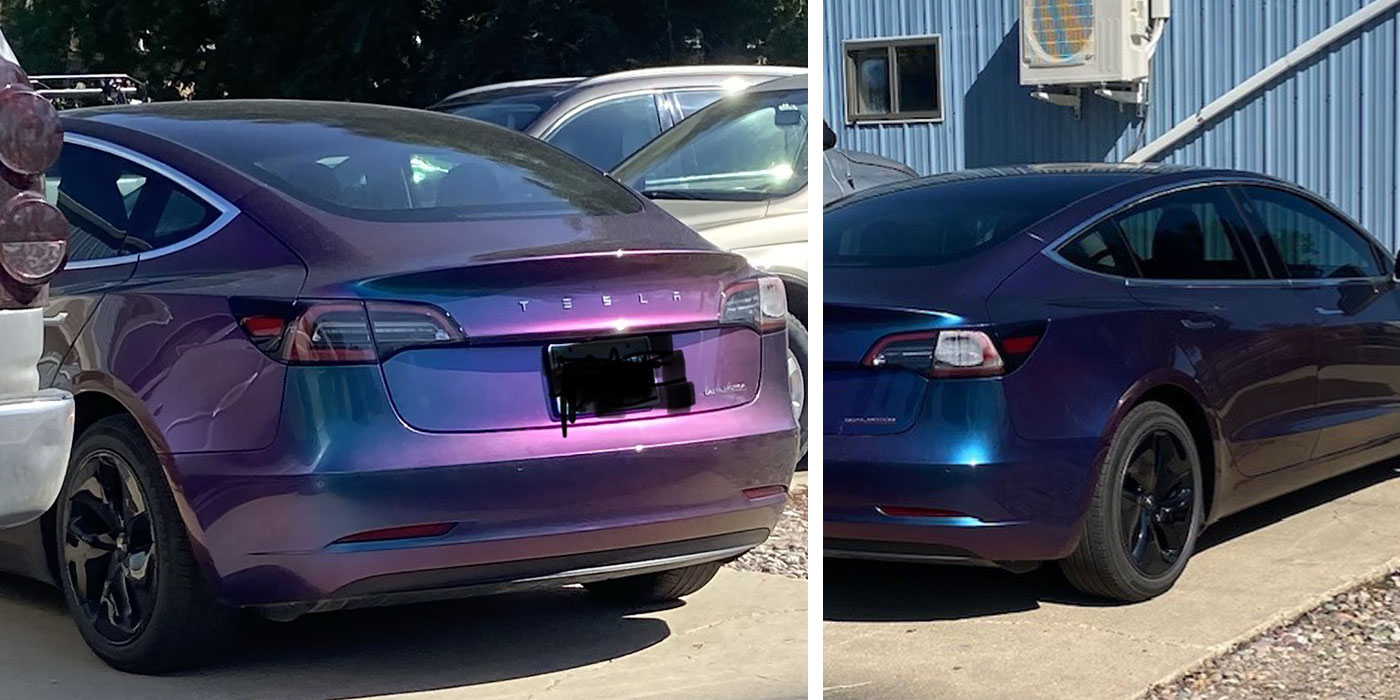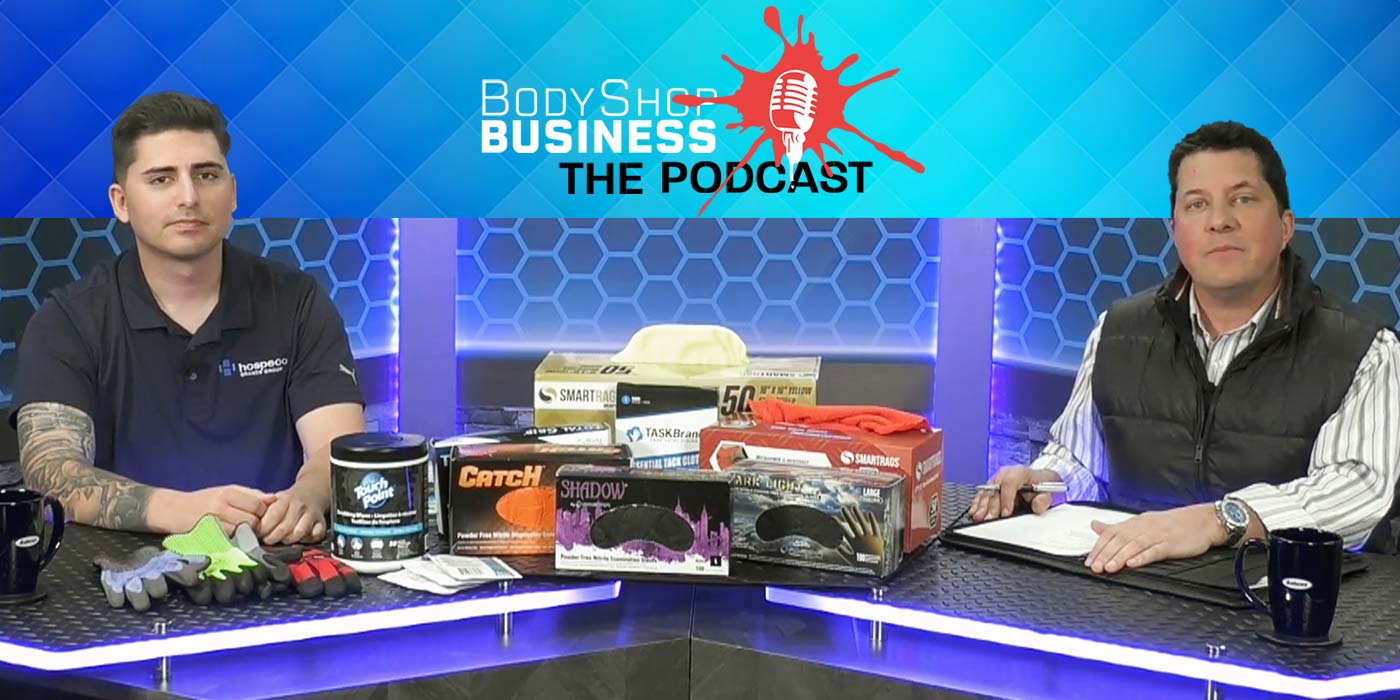Before Nick Orso’s Body Shop, no one in town was even close to going “off the grid.” The 28,000-square-foot Syracuse, N.Y., shop has 280 solar panels on its rooftop that collect enough energy to supply about 90 percent of the energy for his operation.
“We were the first business in our area to switch over to solar power – our project is what they wrote the code to for solar power installations,” says President Mike Orso. “Before our project, the largest solar power installation in town was when someone put a couple panels in their front yard. No one got into a setup where the whole business was on solar power with a dual meter, where overrun could be sold back to the power company.”
Because of the $400,000 investment – of which $100,000 was covered by state and federal grant dollars – Orso’s has reduced its electricity costs by about 60 to 70 percent. That’s $2,000 less per year going toward the grid.
“I wanted to have an alternative power system in my business, and we looked at everything from wind to solar power,” Orso says.
The solar opportunity emerged after Orso transitioned his painting operations from solvent-based to waterborne, a process he began four years ago by converting two 20-year-old downdraft spraybooths to waterborne paint drying systems. Eventually, after compressor and dryer system upgrades, and later replacing the booths with zero-emission technology, Orso’s nearly doubled its painting productivity.
“New technology affords us faster production time and faster drying time,” Orso says. “Instead of painting five cars a day, we can do eight or 10 projects a day in each booth.”
Orso lives on the green edge. He’s an early adopter in the industry as a shop that runs zero-emission spraybooths. He recognizes that his eco-conscious business decisions come with a price tag – the two new booths cost in excess of $300,000. But the return on his investments is real.
Those spraybooths each use a 150,000 BTU furnace, compared to the 1.2 million BTU furnaces of the old equipment. All together, that’s 300,000 BTUs of gas power rather than 2.4 million – essentially, the difference between heating two three-bedroom colonial houses versus 18 houses, Orso says.
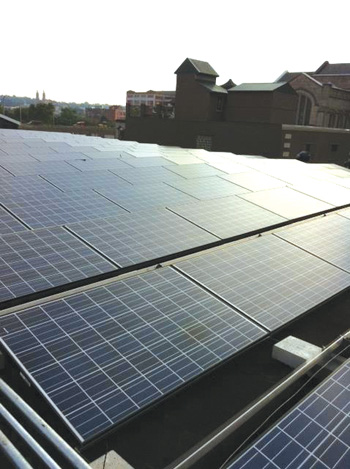 Cash Flow
Cash Flow
Orso, president of the New York State Auto Body Association, knows his green efforts are more ambitious than some. “There is a tipping point,” he acknowledges of the conundrum shops face when weighing the pay-off of investments like waterborne conversions and alternative energy technologies. Then, there’s the cash flow issue.
But there is help, and plenty of it, says Steven Schillinger, EPA Green Garage Challenge administrator.
“Most body shop owners don’t do their own taxes; they usually go to a professional for that,” he says. “That’s what we’re doing for the automotive industry with the Green Garage Challenge – and there are other companies out there like ours.”
Schillinger’s grant-funded organization makes “green” recommendations to shops, and the investments are covered by the money saved (or the grant helps cover the remainder).
“You’ve heard about reverse mortgages for homes – that’s the way we look at [investing in green],” he says. “You’ve got a lot of ‘found money’ you’ve been spending to operate your business.”
Greening up your operation recovers that cash that’s drifting into the environment right along with the carbon emissions.
“There is a value for shop owners to go green, not just because they want to be good stewards to the environment, but because there is actually money in it,” Schillinger says.
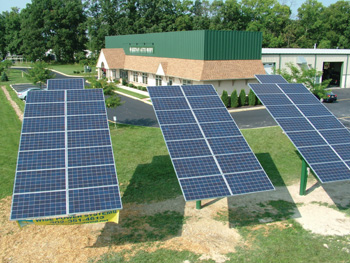 Regulations
Regulations
For now, most shops in most states can choose whether to switch out their solvent-based paint to waterborne. But other states are following California’s regulatory example by requiring body shops to convert to waterborne paint. Keenan Auto Body, with 11 shops in the greater Philadelphia area and one in Delaware County, beat the regulations to the punch.
“We know [regulation] is coming in Pennsylvania,” says Mike LeVasseur, president. “I saw what happened in California and said, ‘You know this is going to happen, so why don’t we be prepared for when it does become regulated?’”
Delaware went waterborne in 2001. “By then, we were already two years into shooting waterborne, so it was a no-brainer,” LeVasseur says, adding that Pennsylvania is expected to follow suit with the regulation by 2015.
LeVasseur estimates the investment amounted to $9,000 per booth, and the company has 14 spraybooths at its locations. But now his operations are cleaner and greener – and the paint operations are just one aspect, as the shops “recycle everything that is possible” and utilize solar power. And LeVasseur is making sure that the communities his shops serve know about the efforts.
“We advertise on our email signatures, and we put that we are a green company on our print ads and on our website,” he says.
Customers seeking out environmentally friendly businesses find Keenan Auto Body. (A sign in front of his Delaware shop reads: “We shoot waterborne.”)
“We get customers at our Delaware location who say, ‘I’m coming here because we like what you’re doing for the environment,’” LeVasseur says.
Consumers, especially in the 18 to 35 demographic, want to know what service providers are doing to minimize their impact on the environment, Schillinger affirms.
“They will buy green first if it’s not too much of a price difference,” he says. “Think about when you go to the market: Do you buy healthy food?”
Going Solar
A green conscience is ultimately what inspired Vartan Jerian, vice president at H&V Collision Centers in Albany, N.Y., to go solar at all four locations, convert to waterborne and institute a laundry list of initiatives, from recycling to lighting to heat.
“From a personal standpoint, I have children and we want them to grow up in an environment that is a fit for them, so I think it’s just the right thing to do,” he says. “We have to look at everything we do and ask, ‘Can we do it better?’”
H&V Collision Centers switched to waterborne about seven years ago. “It wasn’t something we had to do at that point, but the systems are more efficient and better for the environment, so we talked to our paint companies and made the change pretty quickly.”
Before making the switch, H&V retrofitted its spraybooths with new blowers.
“We wanted to be ahead of the curve, and we knew we were going to need some sort of apparatus to assist in drying the water-based paint, so we put drying systems into our booths. That helped us gain efficiencies just with solvent-based paint at that time.”
The measurable payback: waterborne dries faster because H&V is using a two-coat basecoat. “With solvent-based paints, we were using three to six coats,” Jerian says. “We gained the ability, at that time, to paint 1.5 more cars per day, which then was about $2,100.”
Jerian continued to mine the organization for ways to improve its carbon footprint. The state’s Safe Energy Efficiency program provided an audit on all four facilities and offered recommendations. One of those was to convert to high-efficiency lighting, an ROI of 3.5 years for the $75,000 investment.
“If you read any study, better lighting increases efficiency with technology, and people like to work in a better-lit environment. So it saves money and we’re increasing production.”
Last year, H&V Collision Centers installed programmable electronic thermostats in three of its shops (the fourth is converting this year). The radiant gas heat is more efficient, Jerian says.
Communicating green efforts is an internal focus at H&V Collision, where the latest updates are provided to technicians during morning team meetings. Call it greening the culture, but gaining buy-in from the team ensures follow-through with initiatives.
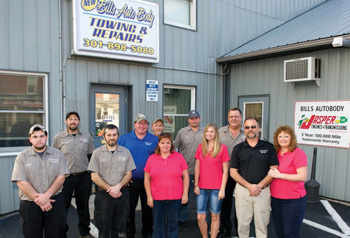 The Meaning of Green
The Meaning of Green
Is shooting waterborne enough to call your business “green?” What about recycling or switching out the light bulbs? Is that enough? At that point, can a shop legitimately label itself green?
The Federal Trade Commission (FTC) is cracking down on companies that claim their products and services are “green.” It issued Green Guides to help marketers avoid making misleading environmental claims.
“Those guides are what have been the premise for millions of dollars of penalties for companies, and that has been going all the way down to body shops,” says Schillinger.
For a body shop to be “green” and put an Energy Star rating on its building, it must get a 75 rating (out of 100) in greenhouse gas emissions (based on reduction.)
“There are a lot of shops that say, ‘I went waterborne, so I’m green,’ and while they made a good step toward that…how green are they?” Schillinger asks.
He does the math: By going waterborne, smog-producing volatile organic compounds (VOCs) are reduced by 70 or 80 percent, but the overall carbon footprint of the operation by changing the paint alone is less than 5 percent.
“Seventy percent of carbon footprint greenhouse gas emissions is made up of energy,” Schillinger says. “Of that, going waterborne is less than 5 percent of the entire facility’s carbon footprint.”
But waterborne paint operations involve much more than a change in chemicals. Painting operations overall can make up 30 to 50 percent of a shop’s overall energy consumption.
“There are auxiliary benefits – it gets complicated,” Schillinger continues. Shops that go waterborne use a fan with a lower kilowatt rating, and paint dries faster so the fan runs for less time. “You reduce or eliminate burning gas, too” he adds.
All of these savings get added on to the energy savings tab.
If a shop continues its green efforts and upgrades lighting to high-efficiency technology and improves the efficiency of spraybooths, that’s more savings. (The point here: You’ve got to take a global approach – and just going waterborne probably isn’t enough.)
“If the shop rescues lighting and improves booth efficiency and reduces their waste, you add all of those percentages,” Schillinger says.
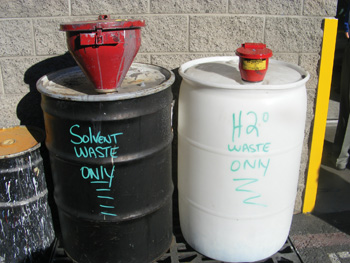 Sustainable Savings
Sustainable Savings
Schillinger’s right: Calculating green does get complicated. That’s why there are tools to help, and resources such as Energy Star for Small Business, which provides free information and technical support. For example, you can access (for free) the EPA’s online energy and water tracking tool, called Energy Star Portfolio Manager, to measure and assess your energy performance.
“You can’t manage what you can’t measure,” Schillinger says. “That’s the premise for everything when it comes to going green.”
An energy audit – these are often free – can point you in the right direction if you’re not sure where to get started with green initiatives.
You don’t have to invest hundreds of thousands to install solar panels to make a big financial impact on your business, Schillinger says. Behavioral changes are huge. For example, simply keeping garage doors rolled down and turning off the lights can save up to 10 percent on energy costs.
“A 10,000-square-foot body shop with one booth spends about $5,000, not counting insurance, for their utilities and operating expenses – electric, gas, water, waste. A 10-percent savings is $500 per month, and all that requires is behavioral science. Turn the lights off. Roll down the doors if they don’t have to be rolled up. You don’t have to invest anything to save 10 percent.”
Want more low-hanging fruit? Consider the disposal of crash products. Orso’s recycles metal, glass, aluminum, cardboard, steel – everything possible. Arrangements are made with vendors who either credit or charge Orso’s for the Dumpster rental, depending on how much is collected.
“We might get a check, or we just might not have to pay a fee,” he says.
Also, solvent recyclers are relatively inexpensive, Orso says. Running solvent-based products through this type of “distiller” separates the moisture from the solvent, allowing you to recycle clean, reusable thinner.
Remember there are grants, tax rebates and credits, along with other financial vehicles designed to assist with initial investments. Schillinger points to dsireusa.org, the Database for State Incentives for Renewables & Efficiency. Type in your state and see what you find. An example of one state’s incentives: “We can fill out all of those applications and you can get up to a $250,000 loan at zero-percent interest for 20 years, so you can put in a couple of paint booths or solar panels.”
Sure, infrastructure like solar panels is a significant investment. “But it’s just like when you have kids going to college; if you want to spend the time and you know where to look, you can find scholarship money.”
Then there’s the payback. The solar panels at Keenan Auto Body’s Delaware shop provide 65 percent of the shop’s energy. When the shop’s closed, that energy is “sold back” to the power company through renewable energy credits. The shop sells back between $25,000 to $30,000 each year.
“The state grants and federal rebates made solar affordable for us,” LeVasseur says. The state financed 50 percent of the project ($250,000), and the federal government provided a rebate of 30 percent of dollars spent, which added up to another $75,000 off Keenan’s $250,000 investment.
“Just start doing something, start small. A 40-gallon recycling container can put you on the path to becoming green.”
Kristen Hampshire is a freelance writer based in Cleveland, Ohio.








